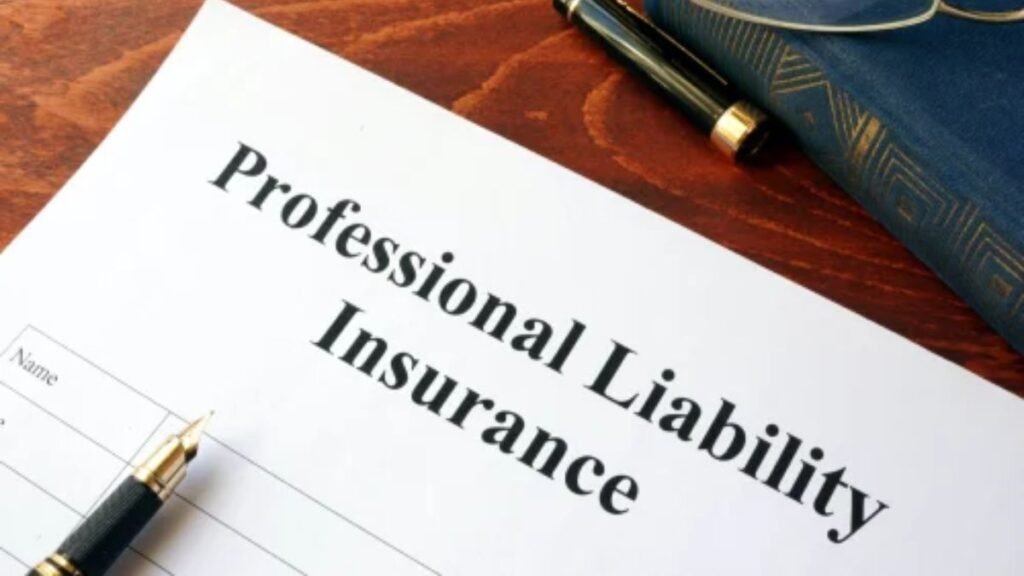As a consultant, your expertise drives your success. Clients depend on your insights to navigate challenges, make informed decisions, or execute complex projects. However, even the most skilled professionals can encounter situations where clients allege mistakes, negligence, or unsatisfactory outcomes—claims that could jeopardize your finances and reputation. Professional liability insurance serves as your safeguard, offering protection against these risks and ensuring your consulting business thrives.
This article dives deep into professional liability insurance for consultants, explaining what it is, why it’s vital, and how to select the best policy. We’ll also provide a comparison table of key features and an FAQ section tailored to aspiring consultants.
What is Professional Liability Insurance?
Professional liability insurance, often called errors and omissions (E&O) insurance, protects service providers like consultants from claims related to their professional work. It addresses financial losses clients might experience due to perceived errors, omissions, or negligence in your services—distinct from general liability insurance, which focuses on physical damages or injuries.
Here’s what it typically covers:
- Negligence: Allegations that you didn’t perform your duties with adequate skill or care.
- Errors and Omissions: Mistakes in advice, reports, or deliverables that harm a client financially.
- Breach of Contract: Claims that you failed to meet agreed-upon terms.
- Legal Expenses: Costs for lawyers, court fees, and settlements, even if the claim lacks merit.
For consultants, this insurance is a lifeline. Your work often involves high-stakes recommendations—whether it’s a business strategy, technical solution, or creative campaign. A single miscalculation or misunderstanding can spark a lawsuit, and professional liability insurance ensures you’re not left footing the bill alone.
Why Consultants Need Professional Liability Insurance
Consulting inherently carries risks because your value lies in intangible deliverables: advice, plans, and expertise. If a client believes your work led to losses, they might pursue legal action. Here are real-world examples where professional liability insurance proves invaluable:
- A financial consultant advises a client to invest in a stock that tanks, prompting a negligence lawsuit.
- A human resources consultant designs a hiring process that unintentionally violates labor laws, triggering legal action.
- A technology consultant oversees a system upgrade that crashes, costing the client downtime and revenue.
Without coverage, you’d face steep legal fees, potential settlements, or judgments—costs that could bankrupt a small business. Even defending a baseless claim can drain your resources. Professional liability insurance absorbs these burdens, letting you focus on your craft.
Beyond protection, it’s a business asset. Many corporate clients or government contracts mandate this coverage, viewing it as a marker of credibility. Carrying it can set you apart, opening doors to bigger opportunities.
Key Features of Professional Liability Insurance for Consultants
Understanding a policy’s components is critical to finding the right fit. Here are the core features consultants should prioritize:
- Coverage Limits: The cap on what the insurer pays per claim or policy period. Limits often range from $250,000 to $2 million, depending on your risk exposure.
- Deductibles: Your upfront cost before coverage activates. Higher deductibles lower premiums but increase your immediate expense in a claim.
- Claims-Made Policies: The standard for professional liability, these cover claims filed while the policy is active, regardless of when the incident occurred. Contrast this with occurrence policies, which cover incidents during the policy term, even if claimed later (less common in this field).
- Retroactive Coverage: Protects against incidents predating your policy start, provided they’re undisclosed at signup—key for new consultants with prior freelance work.
- Defense Costs: Some policies include legal fees within the limit, reducing funds for settlements. Others offer them outside the limit, preserving your full coverage amount.
These elements shape your protection and costs. Tailor them to your consulting niche—higher-risk fields like finance or IT may demand broader coverage than, say, marketing or design.
How to Choose the Right Policy
Picking the ideal professional liability insurance policy involves aligning coverage with your business needs. Here’s a step-by-step approach:
- Evaluate Your Risks: Consider your services and clientele. A consultant handling multimillion-dollar deals needs higher limits than one advising startups.
- Set a Budget: Premiums vary widely—$400 to $2,500 annually—based on coverage, deductibles, and your industry. Balance affordability with adequate protection.
- Shop Around: Compare quotes from multiple insurers. Online platforms or brokers can streamline this, but scrutinize policy details, not just price.
- Check Exclusions: Policies may exclude specific risks, like intentional misconduct or certain consulting types (e.g., legal advice). Confirm your work is covered.
- Research Providers: Look for insurers with strong reputations for customer service and claims handling. A reliable provider can make or break your experience during a claim.
For more insights on navigating liability options, see our guide on Best Small Business Liability Insurance Companies. It’s a valuable resource for comparing top insurers in this space.
Comparison Table: Key Policy Features
To simplify your decision-making, here’s a table comparing four essential parameters of professional liability insurance:
| Parameter | Description | Typical Range | Why It’s Important |
|---|---|---|---|
| Coverage Limits | Max payout per claim or year | $250,000–$2 million | Protects against large financial claims |
| Deductibles | Your cost before insurance pays | $500–$10,000 | Affects premiums and out-of-pocket risk |
| Claims-Made | Covers claims filed during policy term | Standard for E&O | Ensures coverage timing aligns with needs |
| Retroactive Cover | Covers past work if undisclosed | Optional, varies by insurer | Shields new consultants from old risks |
Use this as a starting point to weigh options and prioritize what matters most for your consulting practice.
Frequently Asked Questions (FAQ)
Here are answers to common questions aspiring consultants ask about professional liability insurance.
What does professional liability insurance cover?
It protects against claims of negligence, errors, or omissions in your services, covering legal fees, settlements, and damages tied to financial losses—not physical harm.
How much does it cost for consultants?
Annual premiums typically range from $400 to $2,500, depending on your field, revenue, and coverage limits. Riskier niches like finance or tech often cost more.
Do I need it if I’m just starting out?
Yes. Even new consultants face risks—clients can sue over perceived mistakes. Plus, it builds trust and may be required for contracts.
Can it cover my team or subcontractors?
Usually, it only covers you. Team members or subcontractors need separate policies, though some insurers offer group options—verify with your provider.
How does it differ from general liability insurance?
General liability handles physical incidents (e.g., a client trips at your office), while professional liability addresses financial losses from your advice or services.
What if a client sues me after my policy expires?
Claims-made policies only cover active terms. Add “tail coverage” to extend protection for past work, especially if you’re closing shop or switching insurers.
Conclusion
Professional liability insurance is more than a precaution—it’s a cornerstone of a sustainable consulting career. It shields you from the financial fallout of claims, preserves your professional reputation, and signals reliability to clients. By grasping its features and choosing a policy tailored to your risks, you can consult confidently, knowing you’re covered against the unexpected.


